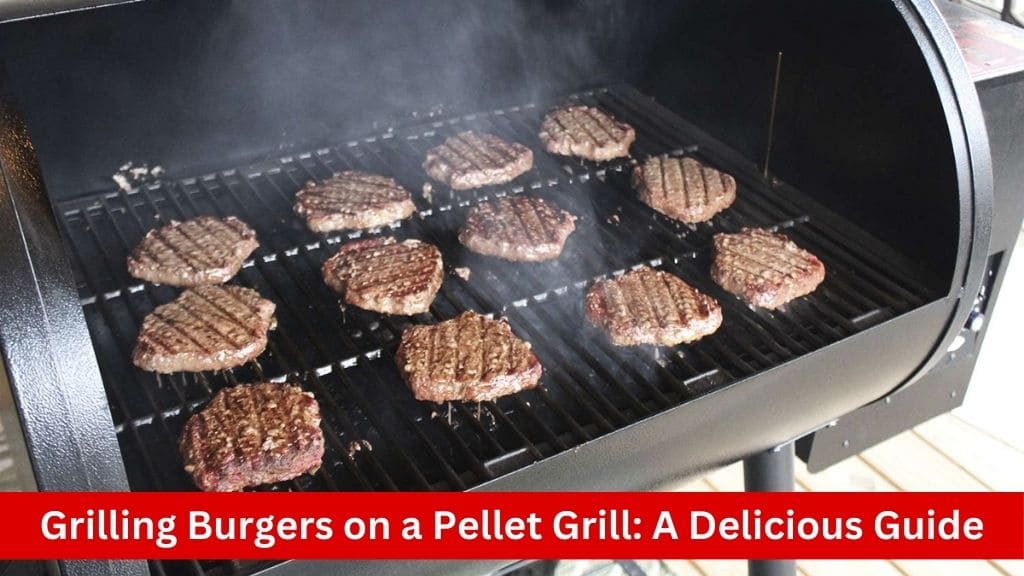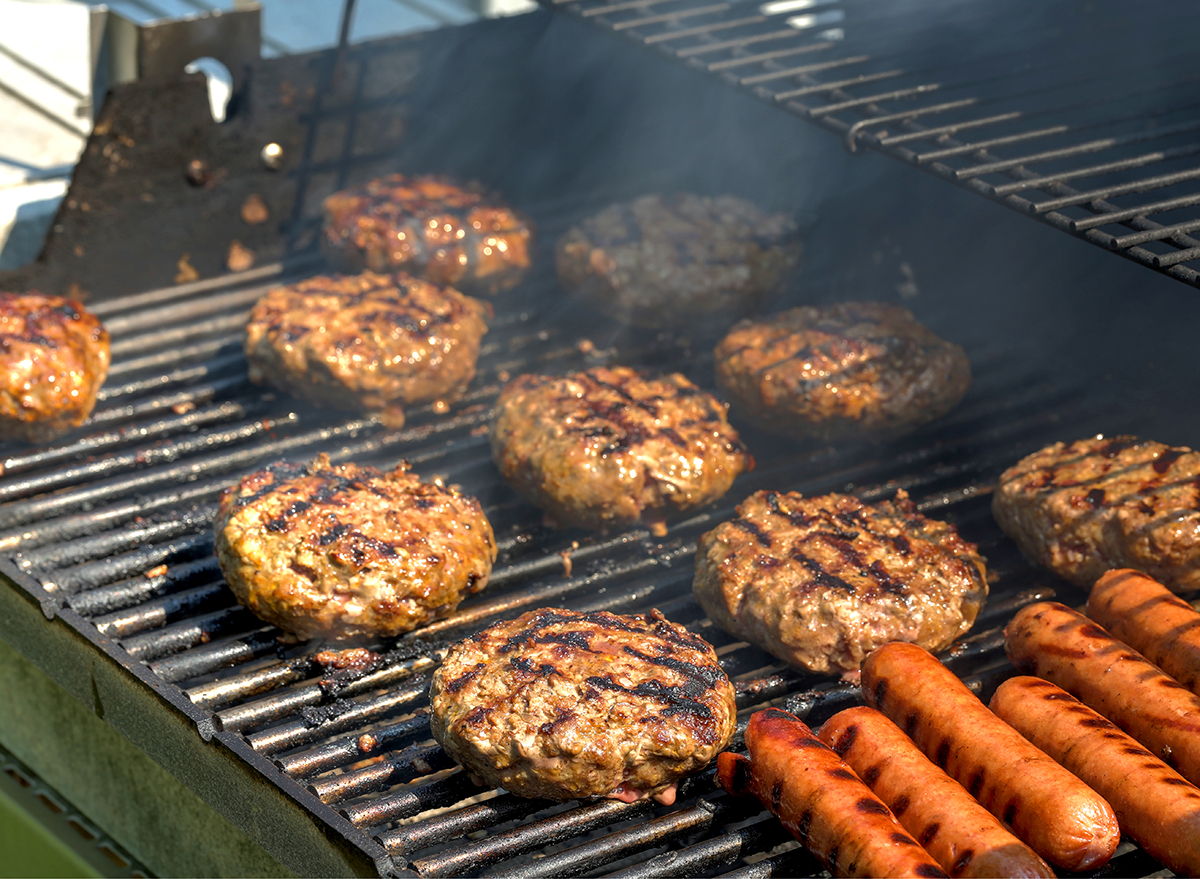Burgers are a quintessential part of any backyard barbecue, and mastering the art of grilling them to perfection can elevate your cookout to legendary status. In this comprehensive guide, we’ll explore everything you need to know about grilling burgers on a pellet grill, from selecting the right meat to achieving the perfect level of doneness. Get ready to fire up your grill and embark on a culinary journey to burger bliss!
Before we dive into the specifics of grilling burgers on a pellet grill, let’s take a moment to understand what makes pellet grills unique. Pellet grills utilize wood pellets as fuel, imparting a rich, smoky flavor to whatever you cook. These versatile grills offer precise temperature control, making them ideal for achieving consistent results every time you grill.
Selecting the Perfect Meat

Understanding Ground Beef Varieties
Ground beef is a staple ingredient in burger making, but not all ground beef is created equal. When you peruse the meat section of your grocery store, you’ll likely encounter various types of ground beef, each with its own characteristics and qualities. Here’s a brief overview of the most common varieties:
- Ground Sirloin: Cut from the midsection of the cow, ground sirloin offers a leaner option with a fat content ranging from 7 to 10 percent. While it provides a wholesome beef flavor, its lower fat content can result in drier burgers if not handled properly during grilling.
- Ground Rounds: Ground rounds come from leaner and tougher cuts of beef, often boasting a fat content as low as 10 percent. While they offer a leaner option, they may lack the richness and juiciness that many burger enthusiasts crave.
- Ground Chuck: Considered by many as the superior choice for burgers, ground chuck is sourced from the shoulder area of the cow and typically contains between 15 and 20 percent fat. This higher fat content not only contributes to juiciness but also enhances flavor and tenderness, making it an ideal choice for mouthwatering burgers.
Factors to Consider
When selecting ground beef for your burgers, several factors come into play:
- Fat Content: As mentioned earlier, the fat content of the meat significantly impacts the flavor and juiciness of the burgers. While leaner options like ground sirloin and ground rounds may appeal to health-conscious individuals, they may result in drier burgers if not supplemented with additional fat or moisture during cooking. Ground chuck strikes a balance between flavor and juiciness, making it a preferred choice for many burger aficionados.
- Consistency: Opt for ground beef that is freshly ground and has not been overly processed or mixed with other additives. Look for meat that appears bright red in color and has a slightly marbled appearance, indicating a good balance of lean meat and fat.
- Quality: Whenever possible, choose high-quality, grass-fed beef over conventionally raised options. Grass-fed beef tends to have a richer flavor profile and may offer additional health benefits due to its higher omega-3 fatty acid content.
Making an Informed Choice
When it comes to selecting the perfect meat for your burgers, it’s essential to make an informed choice based on your preferences and priorities. Whether you prioritize flavor, juiciness, or health considerations, understanding the differences between various types of ground beef can help you make the best decision for your culinary endeavors.
Crafting the Perfect Patty

The Importance of Technique
Crafting a burger patty is not merely a matter of forming ground beef into a round shape. It requires finesse, attention to detail, and an understanding of how different factors influence the final result. Here are some key points to keep in mind:
- Gentle Handling: One of the most critical aspects of patty formation is to handle the meat gently. Avoid overworking the meat, as excessive handling can lead to a dense, tough texture in the cooked burgers. Use light pressure and minimal manipulation to shape the patties, allowing them to retain their natural tenderness and juiciness.
- Moisture Management: Wet hands are your best friend when shaping burger patties. Moistening your hands prevents the meat from sticking and helps maintain the desired texture. Additionally, moistening the meat itself can aid in binding the ingredients together, resulting in a more cohesive patty that holds its shape during cooking.
- Uniformity: Consistency is key when it comes to shaping burger patties. Aim for patties that are uniform in size and thickness to ensure even cooking. This not only enhances the visual appeal of the burgers but also promotes consistent flavor and texture throughout.
Tips for Success
To craft the perfect burger patty, consider implementing the following tips and techniques:
- Portion Control: Use a kitchen scale or eyeball the amount of meat needed for each patty to ensure consistency in size. This ensures that all the burgers cook at the same rate and are ready to serve simultaneously.
- Minimal Compression: While it may be tempting to press down on the patties to flatten them, resist the urge to do so. Excessive compression can squeeze out moisture and juices, resulting in dry, compact burgers. Instead, gently shape the patties with your hands, applying just enough pressure to hold them together.
- Indentation Technique: Make a slight indentation in the center of each patty before grilling. This helps prevent the burgers from puffing up in the middle during cooking, ensuring that they cook evenly and maintain a uniform shape.
- Chilling Time: For optimal results, refrigerate the formed patties for at least 30 minutes before grilling. Chilling firms up the meat and helps the patties hold their shape during cooking, reducing the risk of falling apart or becoming misshapen on the grill.
Experimentation and Personalization
Crafting the perfect burger patty is as much an art as it is a science, and there’s plenty of room for experimentation and personalization. Whether you prefer thick and juicy patties or thin and crispy ones, adjusting the size, shape, and seasoning of the patties allows you to tailor them to your individual preferences.
Seasoning for Flavor
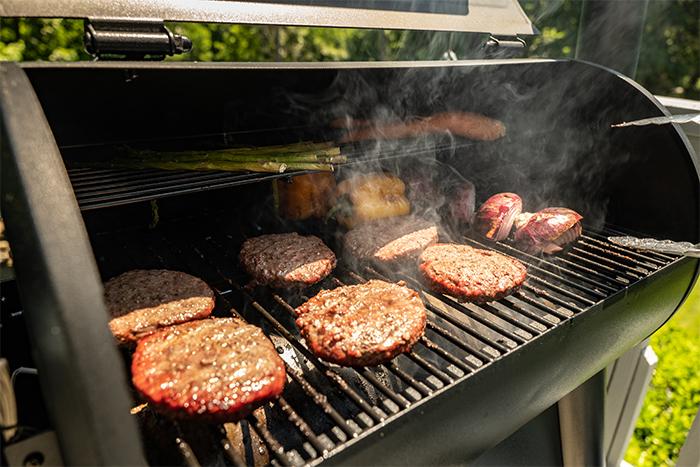
The Role of Seasoning
Seasoning serves two primary purposes when it comes to burgers:
- Enhancing Flavor: A well-balanced blend of spices and seasonings can amplify the natural flavors of the meat, creating a depth of taste that tantalizes the taste buds. From the smoky richness of paprika to the earthy warmth of cumin, each seasoning adds its own unique character to the burger.
- Balancing Ingredients: Seasoning also plays a crucial role in balancing the flavors of the burger. Salt, for example, not only enhances the savory taste of the meat but also helps bring out other flavors and ingredients. Similarly, sweet and tangy seasonings can offset the richness of the meat, creating a harmonious balance of flavors.
Tips for Seasoning Success
To achieve the perfect seasoning for your burgers, consider the following tips and techniques:
- Less Is More: When it comes to seasoning burgers, remember that less is often more. Avoid overwhelming the meat with too many spices or seasonings, as this can overpower the natural flavor of the beef. Instead, opt for a simple yet flavorful blend of salt, pepper, and a few complementary herbs and spices.
- Customization: Don’t be afraid to get creative and experiment with different seasoning combinations to suit your taste preferences. Whether you prefer a classic blend of salt and pepper or want to add a kick of heat with cayenne pepper or chili powder, the possibilities are endless.
- Fresh Ingredients: Whenever possible, use fresh herbs and spices to season your burgers. Freshly ground pepper, minced garlic, and chopped herbs impart a vibrant flavor and aroma that can’t be replicated with pre-packaged seasonings. Invest in a good-quality pepper grinder and a mortar and pestle to grind your spices fresh for maximum flavor impact.
- Seasoning Timing: Season your burgers just before cooking to ensure that the flavors are fully absorbed into the meat. Sprinkle the seasonings evenly over the surface of the patties and gently press them into the meat to ensure they adhere during grilling.
Signature Seasoning Blends
While a simple blend of salt and pepper can work wonders for seasoning burgers, consider experimenting with some signature seasoning blends to elevate your burger game:
- Classic Burger Seasoning: A blend of kosher salt, freshly ground black pepper, garlic powder, and onion powder creates a classic flavor profile that enhances the natural taste of the beef without overpowering it.
- Smoky BBQ Rub: For a smoky, barbecue-inspired flavor, mix together smoked paprika, brown sugar, garlic powder, onion powder, and a touch of cayenne pepper. This bold and robust seasoning blend pairs perfectly with grilled burgers and adds a hint of sweetness and heat to every bite.
- Herb-infused Seasoning: Combine finely chopped fresh herbs like parsley, thyme, and rosemary with minced garlic, lemon zest, and kosher salt for a bright and herbaceous seasoning blend that adds freshness and complexity to your burgers.
Preparing the Grill
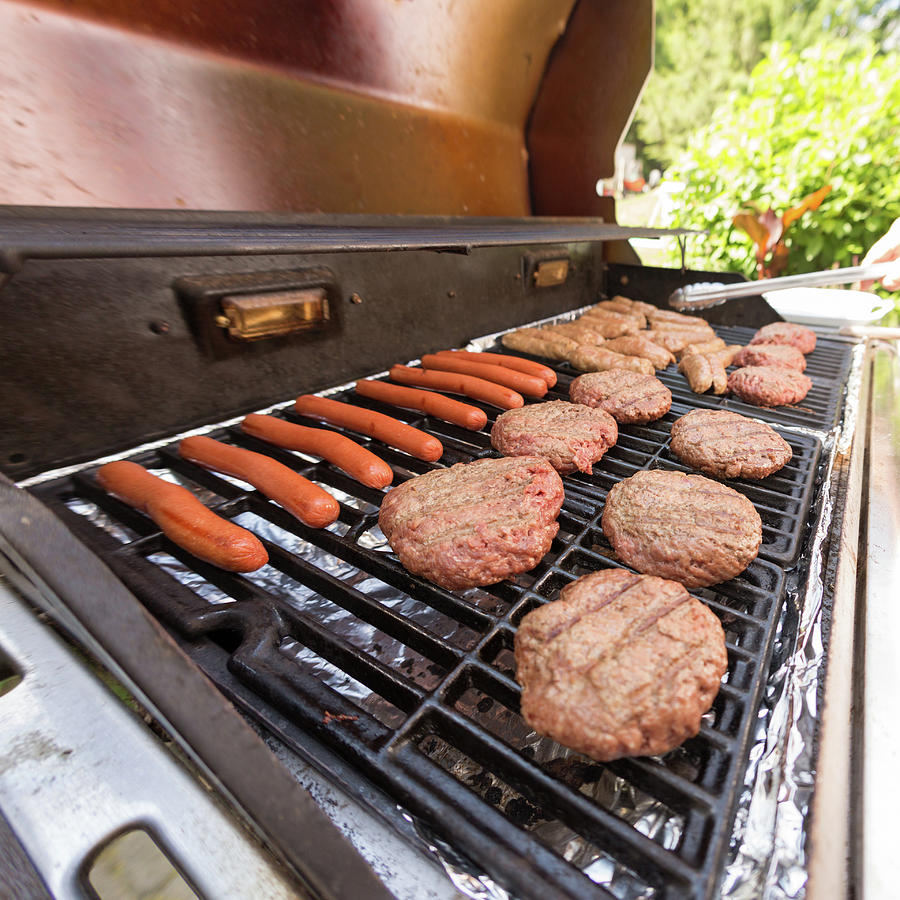
Preheating for Success
Preheating your grill is essential for achieving consistent results and ensuring that your burgers cook evenly. Here’s why preheating is crucial:
- Even Cooking: Preheating allows the grill grates to reach the desired temperature evenly, ensuring that the burgers cook uniformly from edge to edge. This helps prevent overcooked or undercooked spots and promotes a juicy, succulent texture throughout.
- Sealing in Juices: Preheating the grill sears the surface of the burgers quickly, sealing in the natural juices and flavor. This creates a caramelized exterior that adds depth and complexity to the burgers while locking in moisture and tenderness.
- Reducing Sticking: A preheated grill helps prevent burgers from sticking to the grates, making it easier to flip and maneuver them during cooking. This minimizes the risk of tearing or damaging the patties and ensures that they retain their shape and integrity.
Temperature Control
Maintaining the correct temperature throughout the grilling process is key to achieving the perfect burger. Here’s how to manage temperature effectively:
- High Heat: For burgers, set your grill to the highest setting, typically around 450°F. This high heat is essential for achieving a crisp, caramelized exterior while keeping the interior juicy and flavorful.
- Temperature Stability: Pellet grills offer precise temperature control, allowing you to maintain a consistent cooking environment throughout the grilling process. Monitor the temperature closely and make adjustments as needed to ensure that it remains within the optimal range for burger cooking.
- Preheating Time: Allow your grill ample time to preheat before adding the burgers. Depending on your grill model, this may take anywhere from 10 to 20 minutes. A properly preheated grill ensures that the cooking process starts immediately upon placing the burgers on the grates, minimizing cooking time and maximizing flavor retention.
Additional Considerations
In addition to preheating and temperature control, there are a few other factors to consider when preparing your grill for burger grilling:
- Cleanliness: Ensure that the grill grates are clean and free of debris before cooking. Use a grill brush to remove any residue or buildup from previous grilling sessions, ensuring that the burgers cook evenly and don’t pick up any off-flavors.
- Oil the Grates: To further prevent sticking, lightly oil the grill grates before adding the burgers. Use a paper towel or a grill-safe brush to apply a thin layer of oil to the grates, creating a non-stick surface that helps the burgers release easily and develop a beautiful sear.
- Preheating Time: Allow your grill ample time to preheat before adding the burgers. Depending on your grill model, this may take anywhere from 10 to 20 minutes. A properly preheated grill ensures that the cooking process starts immediately upon placing the burgers on the grates, minimizing cooking time and maximizing flavor retention.
Grilling Techniques
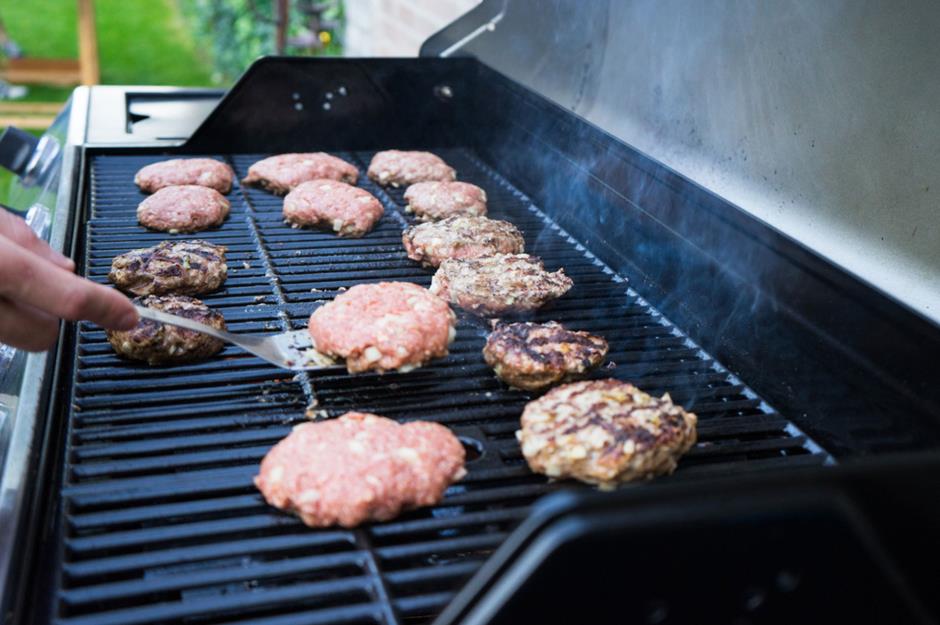
Achieving the Perfect Sear
The sear is what gives burgers their irresistible crust and depth of flavor. Here’s how to achieve the perfect sear:
- Preheat the Grill: Ensure that your grill is preheated to the highest setting, typically around 450°F. A hot grill surface is essential for creating a caramelized exterior on the burgers while locking in moisture and flavor.
- Direct Heat: Place the burger patties directly over the heat source, whether it’s the grill grates or a griddle pan. This allows the burgers to sear quickly, forming a crust on the outside while keeping the interior juicy and tender.
- Avoid Flipping Too Early: Resist the urge to flip the burgers too soon. Allow them to cook undisturbed for a few minutes on one side before flipping to ensure that they develop a golden-brown crust.
Flipping with Finesse
Flipping burgers may seem straightforward, but there’s an art to it that can make or break the cooking process. Here are some tips for flipping burgers with finesse:
- Use a Spatula: Use a wide, sturdy spatula to flip the burgers. Slide the spatula underneath the patties, lifting them gently to prevent sticking, and flip them with a swift, fluid motion.
- Avoid Pressing Down: Resist the temptation to press down on the burgers with the spatula. This can squeeze out valuable juices and lead to dry, compact patties. Instead, let the burgers cook undisturbed to preserve their moisture and flavor.
- One Flip Rule: Aim to flip the burgers only once during the cooking process. Flipping multiple times can disrupt the sear and result in uneven cooking. Allow the burgers to cook on one side until they develop a golden-brown crust, then flip them to finish cooking on the other side.
Monitoring Doneness
Determining when burgers are cooked to perfection requires careful attention and observation. Here’s how to monitor doneness effectively:
- Use a Thermometer: Invest in an instant-read thermometer to accurately gauge the internal temperature of the burgers. Insert the thermometer into the thickest part of the patty to ensure an accurate reading.
- Refer to Temperature Guidelines: Use temperature guidelines to determine the desired level of doneness for your burgers. Aim for an internal temperature of 125°F for rare, 135°F for medium-rare, 145°F for medium, and 160°F for well-done burgers.
- Resting Period: Allow the burgers to rest for a few minutes after removing them from the grill. This allows the juices to redistribute throughout the meat, ensuring a juicy, flavorful result.
Tips for Success

Start with Quality Ingredients
- Choose Quality Meat: Opt for high-quality ground beef with a good balance of lean meat and fat. Look for freshly ground meat or grind your own for the best flavor and texture.
- Fresh Ingredients: Use fresh herbs, spices, and other ingredients to season your burgers. Freshly ground pepper, minced garlic, and chopped herbs can elevate the flavor profile and aroma of your burgers.
Handle the Meat with Care
- Gentle Mixing: Avoid overworking the meat when mixing in seasonings or forming patties. Overhandling can result in tough, dense burgers. Mix the ingredients gently and shape the patties with light pressure.
- Moisture Management: Keep the meat and your hands moist to prevent sticking and ensure easy shaping. Wet hands and a lightly oiled surface can help prevent the meat from sticking to your hands or the grill grates.
Perfect Patty Formation
- Uniform Size: Aim for patties that are uniform in size and thickness to ensure even cooking. Use a kitchen scale or a burger press to achieve consistent results.
- Thumb Indentation: Make a slight indentation in the center of each patty before grilling. This prevents the burgers from puffing up in the middle during cooking, ensuring they cook evenly and maintain a uniform shape.
Temperature Control
- Preheat the Grill: Ensure that your grill is preheated to the appropriate temperature before adding the burgers. A properly preheated grill promotes even cooking and helps create a beautiful sear on the burgers.
- Monitor Internal Temperature: Use an instant-read thermometer to monitor the internal temperature of the burgers and ensure they reach the desired level of doneness. Refer to temperature guidelines to determine when the burgers are cooked to perfection.
Flipping and Handling
- Use the Right Tools: Use a wide, sturdy spatula to flip the burgers. Avoid using forks or tongs, as they can pierce the meat and cause juices to escape, resulting in dry burgers.
- Avoid Pressing: Resist the urge to press down on the burgers with the spatula. This can squeeze out valuable juices and lead to dry, compact patties. Let the burgers cook undisturbed to preserve their moisture and flavor.
Resting Period
Allow for Resting: Allow the burgers to rest for a few minutes after removing them from the grill. This allows the juices to redistribute throughout the meat, resulting in a juicier and more flavorful burger.
Conclusion
Grilling burgers on a pellet grill is a surefire way to take your backyard barbecue to the next level. With precise temperature control, rich smoky flavor, and juicy results, pellet grills offer everything you need to create the perfect burger every time. By following the tips and techniques outlined in this guide, you’ll be well on your way to grilling burgers like a pro. So fire up the grill, gather your friends and family, and get ready to enjoy the ultimate burger experience!

